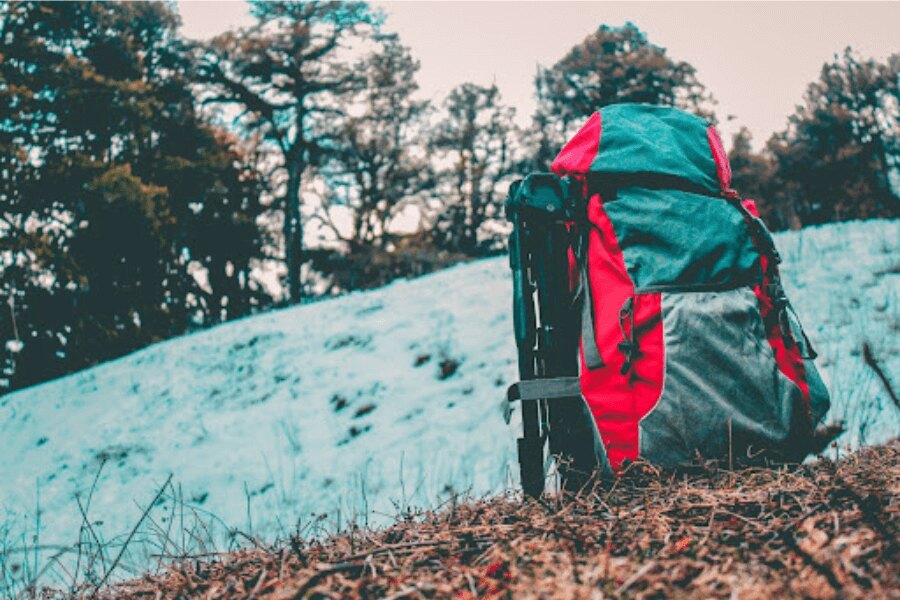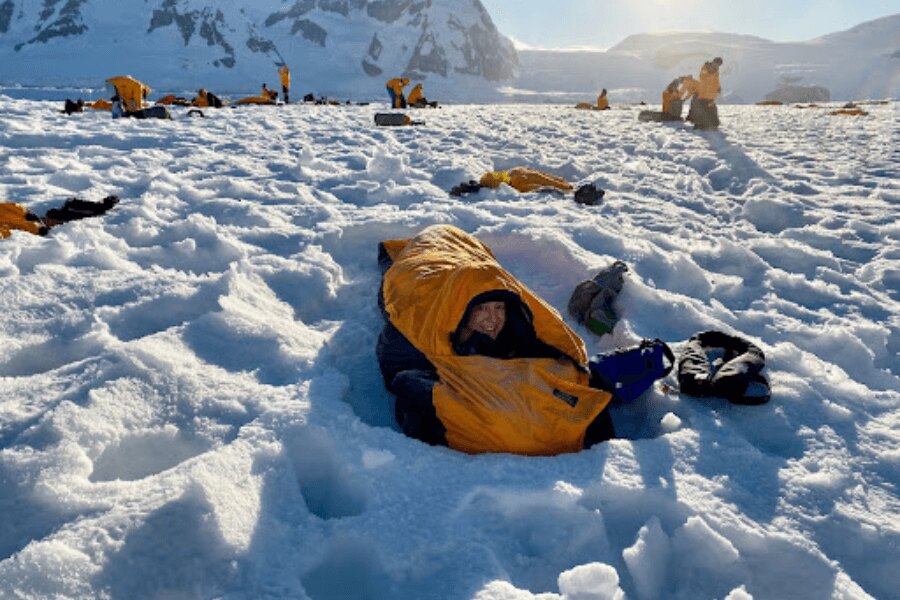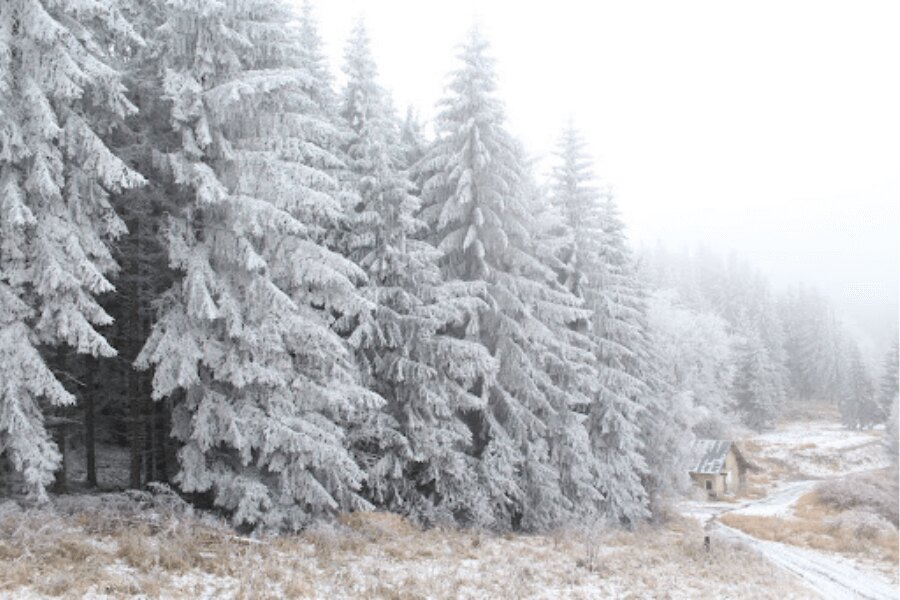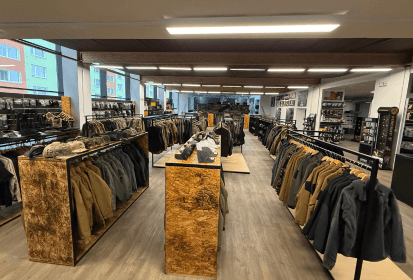How to sleep comfortably in your sleeping bag, even in winter
Sleeping in the open – or in a tent – has its own unique atmosphere. And there are those among us who like to curl up in a sleeping bag even in minus temperatures. Waking up to a frosty morning can be magical – at least if you prepare for bed properly.
When it's really cold
Many outdoor enthusiasts sleep in a sleeping bag not only during the summer, but also in the spring, fall, and even winter. The three colder seasons are characterized by morning frosts. We automatically assume that you will bring a sleeping bag with you that will be adapted to low temperatures. But let's look at it in more detail.

Some outdoor enthusiasts do not give up bivouac even in winter. If you are one of them, pay attention to choosing a quality sleeping bag.
The right sleeping bag
In the following lines, we will discuss what all your sleeping bag should meet in order not to freeze and to survive the night (that is, to spend) as comfortably as possible. Choose a model that meets your requirements and the conditions in which you are going to spend the night outside (or in a tent).
Correct temperature limit
You will find different temperature data for each sleeping bag, which are explained in more detail in the article on sleeping bag temperature data. The concept of comfort temperature is important to us, which defines the temperature limit at which users sleep comfortably in a sleeping bag. And we will also be interested in the threshold temperature at which you will not be cold yet, even if you will no longer experience such comfort.
The right size
Due to the issue of insulation, the sleeping bag should be adapted not only to its comfortable temperature, but also to its size. In short, you should have enough space around you in it, which you will be able to heat with your body heat.
The sleeping bag itself is not meant to warm, but to insulate. And the human body functions as a "radiator", creating an air layer around itself of the appropriate temperature. The sleeping bag "only" ensures that this heat does not escape into the atmosphere, or that it escapes as slowly as possible.
The size of the sleeping bag must therefore also be adapted to whether you are going to sleep in it only in underwear, or if you plan to wear several layers. If you put on a jacket and trousers before going to sleep, thinking that you must be less cold this way, all efforts can be counterproductive. Because of the extra layers of clothing, that very important layer of air can disappear, and the lingering cold can reach your body more easily.
If you are cold in your sleeping bag, even though you have respected the temperature limit and you have an air layer around you, you can put extra clothes on the outside of the sleeping bag in an emergency. Although you have to count on the fact that it will be wet by the morning.

With the right equipment and a little experience, you can sleep like in clover even on snow.
The right material and construction
In terms of material, there is practically nothing to go wrong with the choice of sleeping bag. Modern sleeping bags are globally well adapted to their use.
Synthetic filling is lighter, feathers are warmer. Although you may swear to natural materials like us, keep in mind that if the down gets wet, it will be difficult to dry and the sleeping bag will be heavy to carry. Especially with winter sleeping bags, however, you will feel the difference in weight even with a completely dry piece.
In terms of construction, most users go for mummy sleeping bags, in which you can also wrap your head, which is a very important function, especially in winter (see below). With mummy sleeping bags, you can also regulate the insulation with a drawcord around the head and adapt it to your body proportions. Keep blanket sleeping bags for the summer.
Give a bivy bag a chance
In addition to the sleeping bags themselves, we also offer bivy bags. While some outdoor enthusiasts may find them unnecessary, others cannot get along without them. For the winter season, we lean more towards the second group. Bivy bags, or bivouac bags, are a kind of packaging that protects both the sleeping bag and yourself.
The bivy bag does not weigh that much and can serve as an extra safeguard against excessive cold and humidity. If, despite your best efforts, you still cannot estimate the temperature limits, then the bivy bag can be an extra layer of insulation and replace the clothing we discussed above. In addition, it doesn't matter so much that it gets wet (and anything dries badly in winter for sure).
Think preventively
Despite all efforts to adapt to winter conditions, sometimes it just doesn't work out and you end up cold in your sleeping bag. This can also happen if you follow the expected real temperature in the weather forecast, but miss the felt temperature. And at the same time, the felt temperature can be an order of whole degrees lower than the real temperature measured on the thermometer. All it takes is a cold wind, which happens quite often during the winter.
In such a case, it helps again to think preventively. So what tricks can be used to increase thermal comfort?
- If you have any bottle with you that can withstand extreme temperature ranges, then you can boil water on a gas stove and fill the bottle with it. Then put this bottle in your sleeping bag, it will serve as a hot water bottle. If it is too hot for you, let it cool down outside the sleeping bag for a while, or isolate it from your body with a piece of clothing or a towel.
- Make sure you don't get cold feet. But if you only have one bottle, don't warm your feet with it. Place it more in the middle of your body, for example between your thighs. Thanks to this, the heat will be better distributed throughout your body and you will warm up faster.
- And if you're still cold, lie down sparingly. This means on your back and further cross your legs and place your hands on your chest.

Even snow can create an extra layer of insulation
Snow will also help
If you move in winter in places where there is at least a slightly larger layer of snow (or there are inflated snowdrifts), you have half won. Just dig a bivouac in the snow, which acts as another layer of insulation. It is especially effective against the wind and reduced felt temperature.
However, don't forget (and this applies not only to bivouacs in the snow) effective insulation from below, i.e. a proper mat.
A mat under your body replaces the function of a sleeping bag. And that's simply for the reason that as you lie on the sleeping bag, you compress the layer of insulation below you, and the necessary air layer is also missing here. The mat also protects the sleeping bag (and you) from moisture from underneath.
The head is warm
In winter, it is also necessary to take care that the worst insulated part of the body is usually the head. It is a myth that 30% of the heat escapes through the head - roughly the same amount of heat escapes with each square centimeter of the body. Of course, it also depends on other factors, such as hair growth or body hair.
However, we mean that you should put on a cap in your sleeping bag at least from autumn to spring. Although it is not 30%, heat loss in the head area can still be quite significant.
Try it out
Before you hit the road, test out how your sleeping bag works, especially if you have a new one. Handling a sleeping bag is usually quite straightforward, but especially in the cold season, practically test how the hood of the sleeping bag is pulled down or how the zipper is fastened.
In addition, it is ideal if the zipper is equipped with a cover baffle. If it doesn't happen to be there, pack some insulating tape or a light blanket to mask the weak spot before going to bed.
Readers are further interested











































































































































